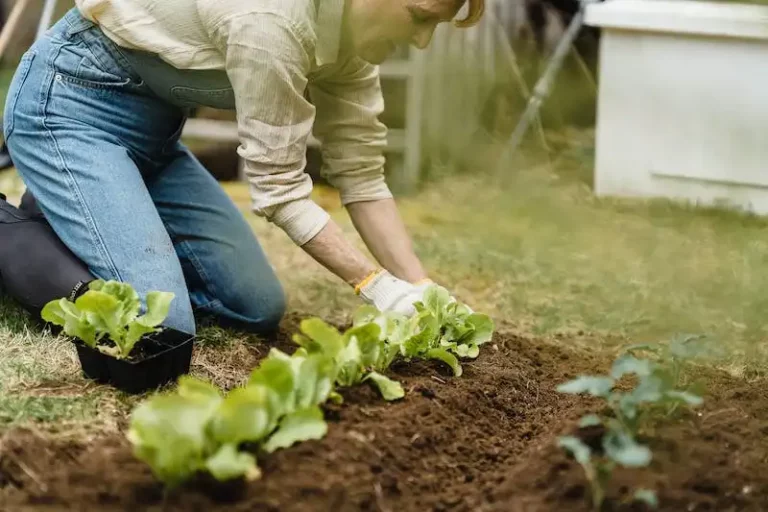Raspberries are a popular fruit in gardens and orchards around the world. They are a type of dwarf cane fruit that is rooted in the ground and can grow in a variety of climates. Raspberries belong to the same family as blackberries, and they have many similarities in terms of growth habits and requirements.
In most regions, raspberries start to bloom in the late spring or early summer. The exact timing of the bloom can vary depending on the climate and specific variety of raspberry. The flowers of the raspberry plant are small and white, and they usually appear on the second-year canes. These canes grow from the crown of the plant, which is the base of the plant where the roots are. Raspberries are typically divided into two main types: summer-bearing and fall-bearing.
Summer-bearing raspberries bloom and bear fruit on canes that grow in the previous year. These canes reach their largest size in the early summer and then decline. In the fall, they die back to the ground. Fall-bearing raspberries, on the other hand, grow and flower in the current season. They produce fruit in the late summer or early fall and then die down to the ground in the winter.
The blooming season of raspberries can be influenced by several factors. One of the main causes of raspberry blooming is temperature. Raspberries require a certain number of chill hours, or hours of cold temperatures, to initiate the blooming process. Another factor that affects blooming is the amount of sunlight the plants receive. Raspberries generally need full sun to produce the best fruit.
In addition to temperature and sunlight, raspberry plants also require proper soil conditions and good drainage. They grow best in well-drained soil with a pH between 5.5 and 6.5. Raspberries are particularly sensitive to heavy clay soils, which can retain too much water and cause root rot. To improve drainage, it is recommended to add organic matter, such as compost, to the soil before planting.
When it comes to diseases and pests that can affect raspberry blooming, aphids are one of the common culprits. These small insects can infest the plants and cause damage to the leaves and stems. Aphid infestation can be reduced by carefully selecting disease-resistant varieties and removing any infected plants. In some cases, aphids can be controlled by spraying the plants with a strong stream of water or by introducing natural predators, such as ladybugs, to the garden.
In conclusion, raspberries bloom in the late spring or early summer and require certain conditions, such as temperature, sunlight, and proper soil, to produce the best fruit. Careful attention to these factors, along with proper training and pruning, can help ensure a bountiful raspberry harvest. By staying vigilant for diseases and pests, and taking appropriate measures to prevent or control them, gardeners can enjoy the delicious taste of homegrown raspberries throughout the growing season.
How to Plant and Grow Raspberries
When it comes to planting and growing raspberries, there are a few things you need to keep in mind to ensure a successful harvest. Follow these tips to help you get started:
- Choose the right variety: Select a raspberry variety that is suitable for your climate and desired harvest season. There are two main types of raspberries: summer-bearing and primocane-fruiting. Summer-bearing varieties produce fruit on two-year-old canes, while primocane-fruiting varieties can produce fruit on both first-year and second-year canes.
- Prepare the soil: Raspberries prefer well-drained soil with a pH between 5.6 and 6.2. If your soil is heavy clay, improve it by adding organic matter such as compost. This will help to promote good drainage and aeration.
- Planting: When planting raspberries, make sure to space the plants about 2 to 3 feet apart in rows. Dig a hole deep enough to accommodate the roots, and place the plant in the hole, making sure the crown is slightly above the soil level. Backfill the hole and gently firm the soil around the plant.
- Mulching: Mulching around the base of the plants with organic matter such as straw or wood chips can help to conserve moisture, suppress weeds, and improve soil structure. Be careful not to place the mulch directly against the stems to prevent potential disease and pest problems.
- Watering: Raspberries have shallow roots and require regular watering, especially during dry periods. To avoid waterlogging the soil, water at the base of the plants rather than over the top. Aim to keep the soil consistently moist but not waterlogged.
- Pruning: Proper pruning is essential for maintaining healthy raspberry plants and promoting good fruit production. During the dormant season, remove any dead or damaged canes, as well as any weak or overcrowded canes. Cut the remaining canes back to be about 5 to 6 feet tall for summer-bearing varieties or 3 to 4 feet tall for primocane-fruiting varieties. Prune later in the season to encourage branching and more fruit production.
- Fertilizing: Raspberries are not heavy feeders, but they benefit from a balanced fertilizer application in early spring. Use a slow-release organic fertilizer to provide nutrients gradually throughout the growing season.
- Protecting from pests and diseases: Regularly inspect your raspberry plants for signs of pests and diseases. Common problems include powdery mildew, aphids, and raspberry crown borers. If necessary, apply organic pest control measures or consult with a horticulture expert for help in managing these issues.
- Harvesting: Raspberries are ready to be harvested when they are fully ripe and easily detach from the plant when gently pulled. Depending on the variety, raspberries can come in different colors, including red, purple, and gold. Harvest the berries regularly to encourage continuous production.
- Storing and using: Fresh raspberries are highly perishable, so it’s best to use them soon after harvesting. If you have an abundance of raspberries, you can freeze them or make them into jams, jellies, or desserts to enjoy throughout the year.
- Winter care: In regions with cold winters, raspberries will go dormant. Protect the plants during winter by mulching around the base with straw or leaves. This will help insulate the roots and prevent damage from freezing temperatures.
By following these guidelines, you can successfully plant and grow raspberries in your garden. With proper care and attention, you can enjoy a bountiful harvest of these delicious berries year after year.
Raspberry Overview
Raspberries are a popular fruit that are known for their delicious taste and vibrant colors. They are part of the Rosaceae family and are closely related to blackberries. Raspberry plants can grow in a wide range of soils and climates, making them a versatile crop to grow.
There are two main types of raspberry plants: summer-bearing and everbearing. Summer-bearing raspberries produce one crop of berries per year, while everbearing raspberries can produce two crops. The first crop of everbearing raspberries is usually harvested in the summer, and the second crop is harvested in the fall.
When it comes to planting raspberries, it is important to select a site with well-drained soil and full sun. The soil should be rich in organic matter and free from weeds. Planting can be done in the spring or fall, depending on the climate. Raspberry plants should be spaced about 2-3 feet apart to allow for proper air circulation.
Raspberry plants require regular watering, especially during dry periods. It is important to keep the soil evenly moist, but not waterlogged. Overwatering can cause root rot and other diseases. Mulching around the plants can help retain soil moisture and reduce weed competition.
Raspberry plants are susceptible to various diseases and pests, such as raspberry cane borers and raspberry leaf spot. To prevent infection, it is important to remove and destroy any infected or damaged foliage. Regularly spraying the plants with a fungicide or insecticide, such as malathion, can also help prevent disease and pest problems.
Pruning is an important part of raspberry plant maintenance. In the early spring, any dead or damaged canes should be removed, as well as any canes that fruited the previous year. This will help improve air circulation and sunlight penetration, resulting in better fruit yields. Pinching the top of the canes to a desired height will help promote branching and increase fruit production.
Raspberries are often harvested by hand, as the fruits are delicate and easily damaged. Once harvested, they can be used in a wide variety of recipes, such as jams, pies, and desserts. Raspberries can also be eaten fresh or frozen for later use.
In conclusion, raspberries are a versatile and delicious fruit that can be grown in a wide range of climates and soils. With proper care and attention, raspberry plants can provide bountiful crops for many years. Whether planted in a garden or used as a decorative front yard plant, raspberries are always a great addition to any landscape.
Where to Plant Raspberries
Choosing the right location for planting raspberries is crucial for their growth and overall productivity. Here are a few important considerations:
- Sun exposure: Raspberries thrive in full sun, so choose a spot in your garden that receives at least six to eight hours of direct sunlight each day.
- Soil conditions: Raspberries prefer well-drained soil with a pH between 5.5 and 6.5. Avoid sandy or heavy clay soils, as they can become compacted or retain too much moisture, which can lead to root rot.
- Spacing: Allow enough space between raspberry plants to provide good air circulation and prevent the spread of diseases. Planting them in rows with a spacing of 2 to 3 feet apart will usually suffice.
- Watering: Raspberries require regular irrigation, especially during dry spells. It is important to provide them with adequate water to ensure proper growth and fruit development.
- Trellising: Trellising your raspberry plants can be beneficial, especially for the taller varieties, as it helps support the canes and increases yields. Consider installing a trellis system to keep the plants upright and make harvesting easier.
- Temperature: Raspberries prefer cooler climates and can be grown in different regions. They are suitable for spring or early fall planting in most areas, but their specific cold hardiness depends on the variety. Consider the local climate and choose raspberry varieties accordingly.
- Disease and pest management: Raspberries are prone to diseases and pests such as viruses, crown borers, and fungal infections. To avoid infection, choose disease-resistant varieties and practice proper sanitation by removing and destroying infected plants. Regularly inspect the plants for any signs of disease or pest damage.
- First-year plantings: If you are planting bare-root raspberry plants, keep in mind that they may not produce a high yield in their first year. Pinch off any flowers or fruits that may emerge to redirect energy into root and crown development. This will result in stronger and more productive plants in the following years.
- Storage and planting: If you purchase bare-root plants, make sure to keep their roots moist until planting. Soak the roots in water for about a week before planting them in the ground. Planted raspberry leaflets should always look moist and healthy.
- Additional considerations: In Utah, for example, raspberry plants may need additional protection in the winter, as they are more susceptible to cold injury. Fall planting is recommended in this region, allowing the plants to establish and develop strong roots before the growing season.
By considering these factors and following proper planting and maintenance techniques, you can ensure successful raspberry growth and a bountiful harvest. Enjoy the delicious fruits of your labor!




